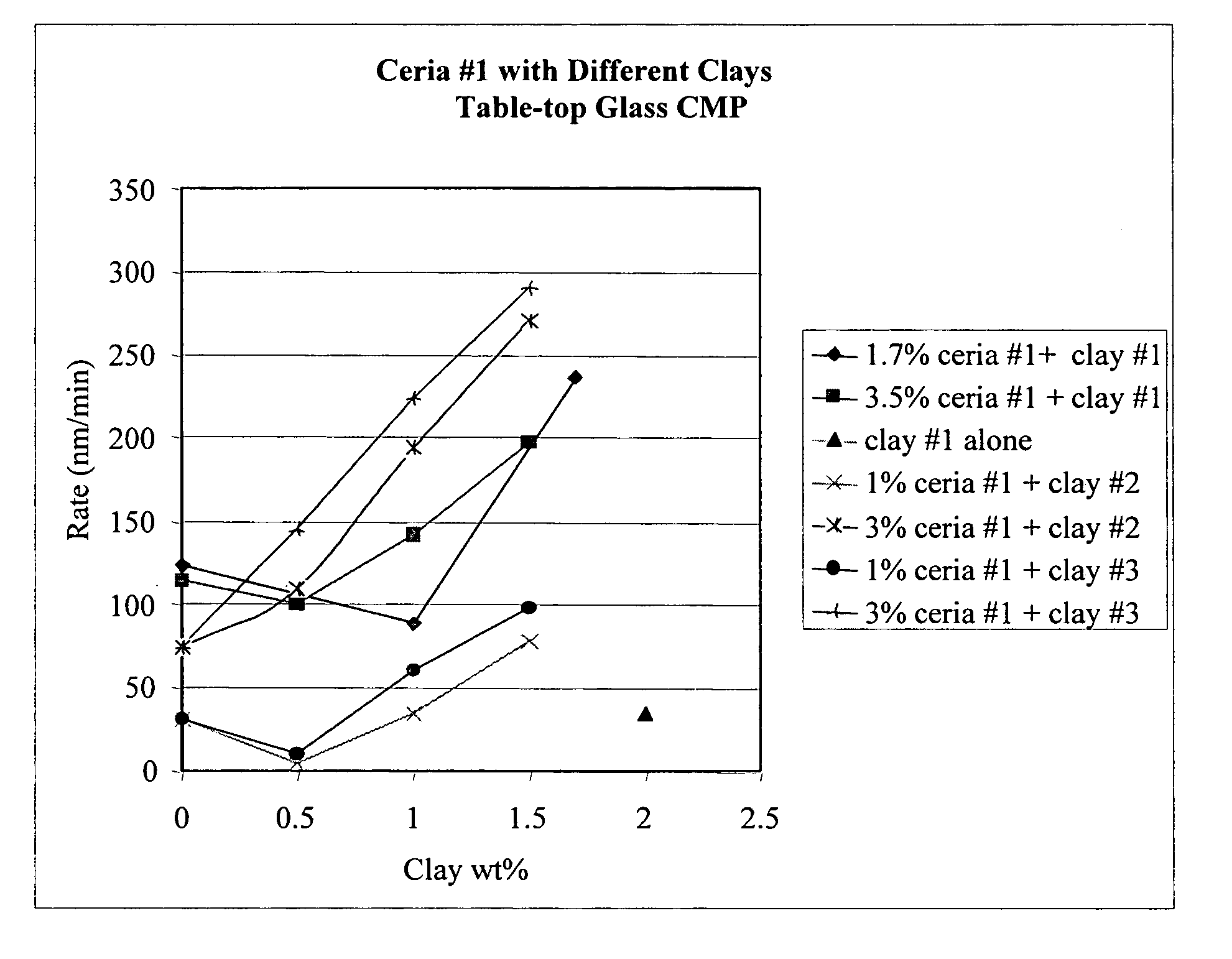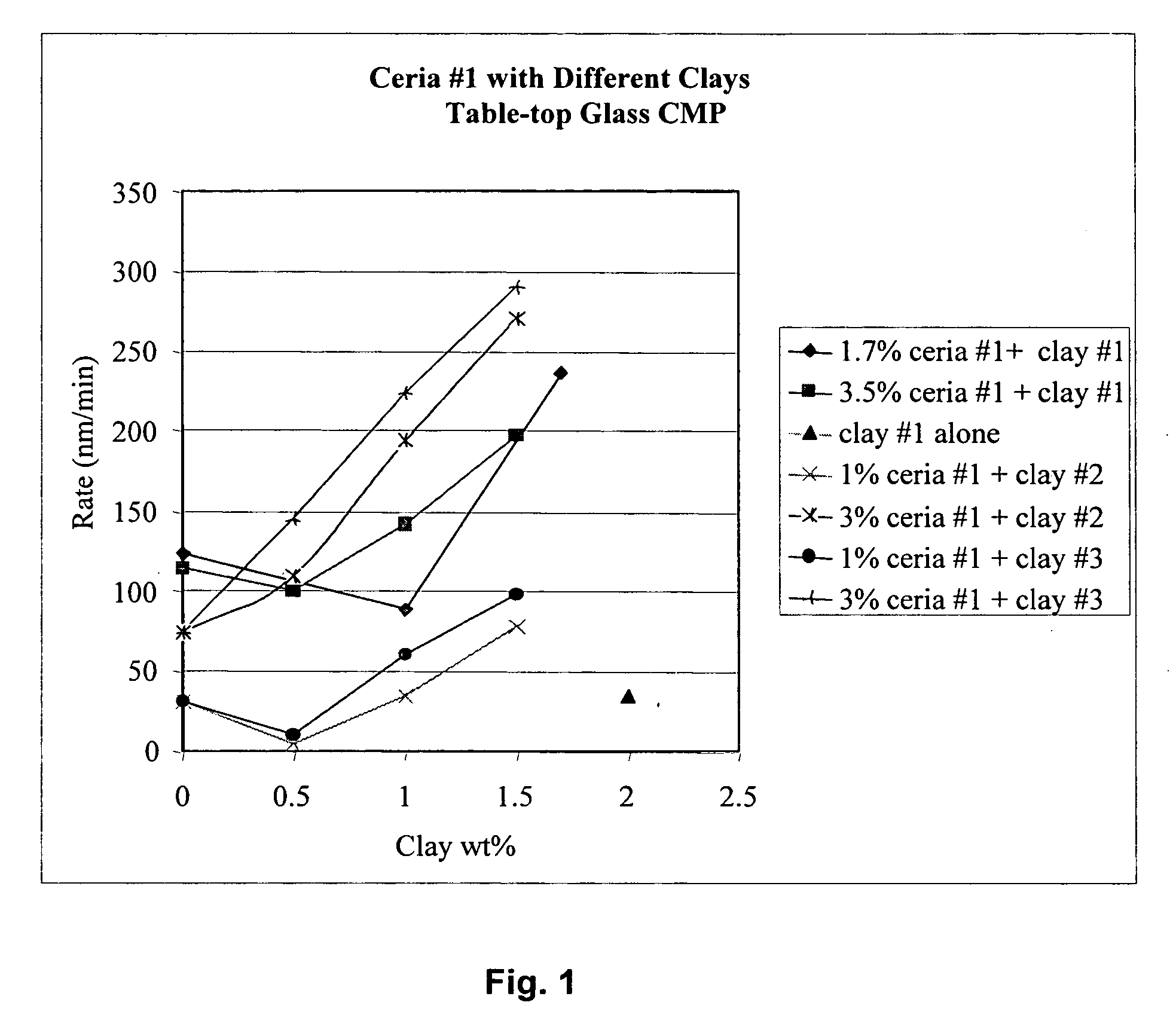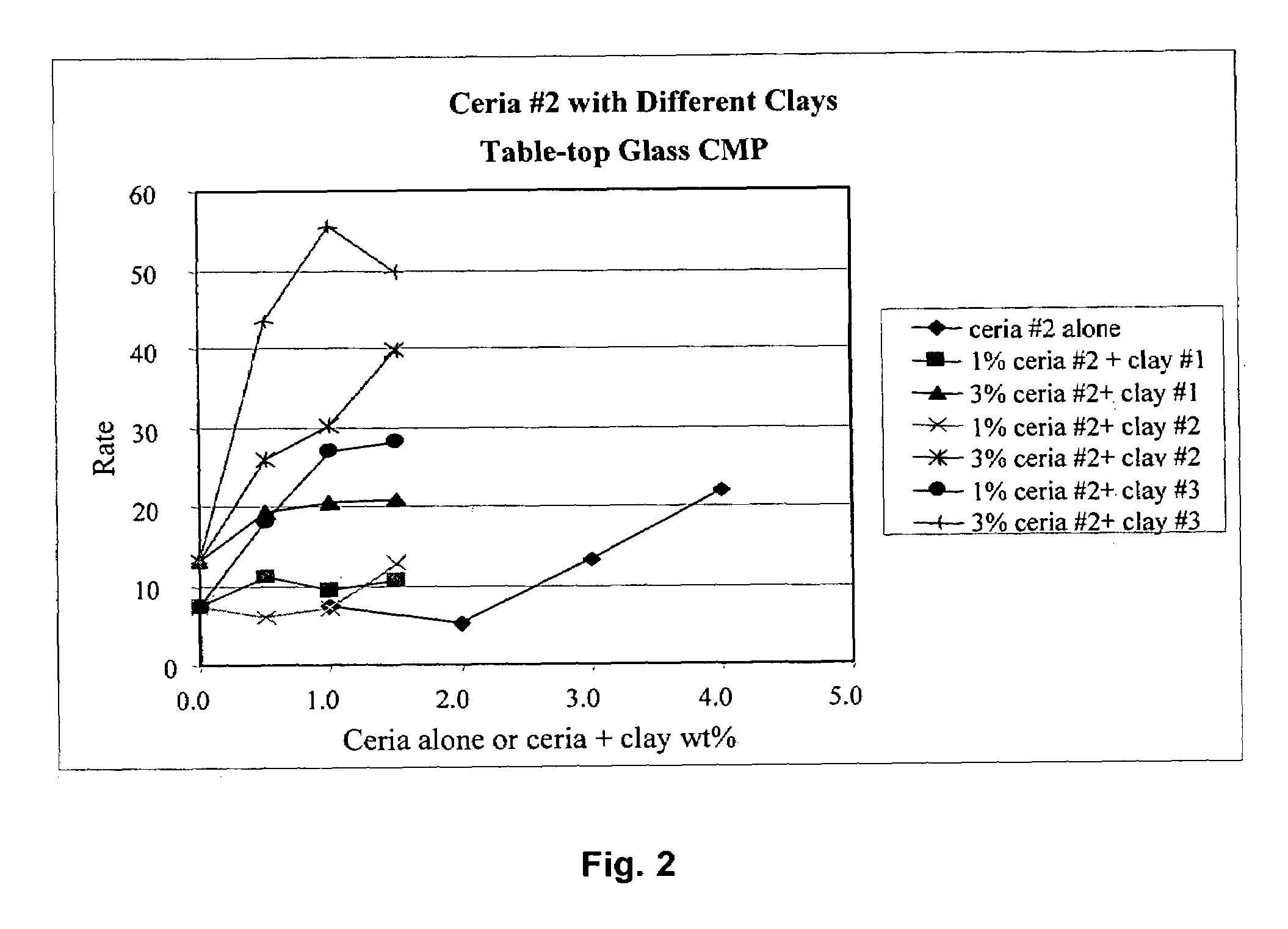Chemical-mechanical polishing (CMP) slurry containing clay and CeO2 abrasive particles and method of planarizing surfaces
a technology of ceo2 abrasives and chemical-mechanical polishing, which is applied in the direction of other chemical processes, manufacturing tools, chemistry apparatus and processes, etc., can solve the problems of achieve the effect of improving the glass polishing rate and increasing the polishing ra
- Summary
- Abstract
- Description
- Claims
- Application Information
AI Technical Summary
Benefits of technology
Problems solved by technology
Method used
Image
Examples
example 1
[0046]The polishing experiments were carried out using a bench-top Struers DAP-V polisher. The pure quartz disks (CHEMGLASS, INC., CGQ-0600-03) have a diameter of 1 inch and a thickness of 0.25 inch. The polishing pads were IC-1400 (CR IC 1400-A3, 8 inches in diameter, K-GRV grooved, PSA) provided by Rodel, Inc. The pads were hand-conditioned with 220-grit sandpaper and a nylon brush before being used. The center-to-center distance between the disk and the pad was 5.5 cm. The polishing table and the disk holder are both rotated at a speed of 100 rpm in the same clockwise direction. The applied downward pressure is 5 psi and the slurry flow rate is 30 ml / min. The polishing rates were determined from the mass loss of glass from the disks during 3 minute, 6 minute, 9 minute and 12 minute polishing runs and the reported values are the average of these four runs.
[0047]The following Tables 2–4 and FIGS. 1–3 show the rate of glass removal using the slurry polishing compositions containing ...
example 2
[0050]The same procedure was carried out as in Example 1, using the same three sodium montmorillonite clay abrasive particles, but using CeO2 #2 abrasive particles that were negatively charged, having a mean particle size of 650 nm. The percentages of clay and negatively charged CeO2 abrasive particles were varied, as shown in Table 3, and FIG. 2.
[0051]
TABLE 3Glass CMP results using ceria #2 with different clays at pH = 10.*Ceria #2Clay #1(wt %)(wt %)Clay #2 (wt %)Clay #3 (wt %)Rate (nm / min)1.0742.0513.01314.02191.00741.00.51111.01941.01.51063.001313.00.51943.012053.01.52081.00741.00.5601.01711.01.51283.001313.00.52593.013023.01.53981.00741.00.51821.012701.01.52823.001313.00.54363.015553.01.5498*CeO2 particles are negatively charged at pH = 10
[0052]As shown in Table 3 and FIG. 2, the CeO2 #2 particles alone provide a better polishing rate than the combination of CeO2 and clay until a synergistic combination is reached. The amount of clay necessary in combination with the CeO2 varies...
example 3
[0053]The same procedure was carried out as in Example 1, using the same three sodium montmorillonite clay abrasive particles, but using CeO2 #3 abrasive particles that were positively charged, having a mean particle size of 165 nm. The percentages of clay and positively charged CeO2 abrasive particles were varied, as shown in Table 4, and FIG. 3.
[0054]
TABLE 4Glass CMP results using ceria #3 with different clays at pH = 10.*Ceria #3Clay #1(wt %)(wt %)Clay #2 (wt %)Clay #3 (wt %)Rate (nm / min)1.0152.0303.0344.0451.00151.00.5111.011111.01.51713.00343.00.503.012083.01.53131.00151.00.5461.011711.01.51803.00343.00.51973.012933.01.53491.00151.00.5601.011061.01.51543.00343.00.5883.011413.01.5202*CeO2 particles are negatively charged at pH = 10
[0055]The results clearly indicate that all clay abrasive particles (#1, #2, and #3) have strong synergistic effects with all three different abrasive ceria particles in chemical mechanical polishing (CMP). When synergistic amounts of clay are added, t...
PUM
| Property | Measurement | Unit |
|---|---|---|
| particle size | aaaaa | aaaaa |
| particle size | aaaaa | aaaaa |
| particle size | aaaaa | aaaaa |
Abstract
Description
Claims
Application Information
 Login to View More
Login to View More - R&D
- Intellectual Property
- Life Sciences
- Materials
- Tech Scout
- Unparalleled Data Quality
- Higher Quality Content
- 60% Fewer Hallucinations
Browse by: Latest US Patents, China's latest patents, Technical Efficacy Thesaurus, Application Domain, Technology Topic, Popular Technical Reports.
© 2025 PatSnap. All rights reserved.Legal|Privacy policy|Modern Slavery Act Transparency Statement|Sitemap|About US| Contact US: help@patsnap.com



